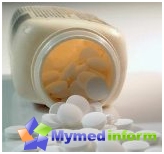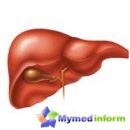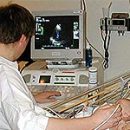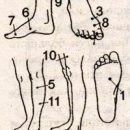Polycystic ovaries occurs in women in any age group. The reasons for it serve stress, heredity, colds, angina, hormonal disorders, and infertility becomes the most serious consequence.
Content
What is polycystic ovarian?
 Polycystic ovarian – This is one of the hormonal disorders that lead to infertility due to the fact that there is no ovulation in the body of a woman. To avoid infertility and other complications of ovarian polycystosis, it is necessary to regularly contact the gynecologist for planned inspection. The identification of the disease at an early stage increases the chances of rapid cure and reduces the risk of infertility.
Polycystic ovarian – This is one of the hormonal disorders that lead to infertility due to the fact that there is no ovulation in the body of a woman. To avoid infertility and other complications of ovarian polycystosis, it is necessary to regularly contact the gynecologist for planned inspection. The identification of the disease at an early stage increases the chances of rapid cure and reduces the risk of infertility.
Polycystic ovarian develops in violation of functions:
- ovarian,
- adrenal glands,
- Hydatalamus,
- pituitary,
- thyroid gland.
On a number of data, the ovarian polycystic disease is observed primarily with a violation of the function of the hypothalamus, pituitary and adrenal glands. Therefore, the disease can manifest themselves differently - depending on the causes of its occurrence. To establish the diagnosis of ovarian polycystosis, there is not enough single diagnostic.
Very often there are such cases when the diagnosis of ovarian polycystosis is erroneously exposed when ultrasound of a small pelvis organs. According to foreign authors, an ultrasonic picture of polycystic ovary may be observed or normally or with other diseases. This requires careful comparison of the results of the ultrasound with the results of other studies, such as a clinical picture and hormone tests.
The ovarian polycystosis is clinically manifested in the form of disorders of the menstrual cycle (more often than delay), excessive collaboration on the body, increase all sizes of ovaries, and half of the patients – overweight. When measuring the basal temperature (in the rectum) it remains constant during the entire menstrual cycle, and does not increase in its second half, as it is normal. With the most pronounced form of the ovarian polycystic, these signs appear already in adolescence, after the occurrence of menstruation.
The first signs of polycystic ovarian
 First of all, you need to pay attention to such symptoms:
First of all, you need to pay attention to such symptoms:
- Sometimes women experience pain - belly below as if it pulls;
- oily skin, acne, salted hair - the girl can also not pay attention to this;
- irregular menstruation, long delays is the main symptom; Often, menstruation does not come month, the other, the third, up to six months - during the formation of the ovarian function, the girl may not pay attention to such delays;
- Suddenly, without visible reasons, weight may increase by 10-15 kg.
Treatment of ovarian polycystosis
 In the treatment of this disease, medicines are used that reduces the level of men's sex hormones (with polykysotosis, their level increases several times) and regulating metabolic processes in brain structures. In the presence of overweight, absolutely necessary is the reduction of body weight. An important stage in the treatment of ovarian polycystosis is to stimulate ovulation.
In the treatment of this disease, medicines are used that reduces the level of men's sex hormones (with polykysotosis, their level increases several times) and regulating metabolic processes in brain structures. In the presence of overweight, absolutely necessary is the reduction of body weight. An important stage in the treatment of ovarian polycystosis is to stimulate ovulation.
If the improvement does not occur as a result of treatment, resort to surgical intervention. Currently, it is made in the form of laparoscopy. Unfortunately, the operational intervention in the ovaries gives only a temporary effect that lasts about six months.
In recent years, a new group of drugs has appeared - Gonadotropin-Rilizing Gormon agonists (December, Zoladex and DR.). Their continuous use for 2-3 months with subsequent stimulation of ovulation or without it allows you to do without surgery in many cases.
Secondary ovarian polycystosis is observed at a later age. Often its cause is chronic inflammatory diseases of the female sexual sphere. If the work of the ovaries is broken in full, the woman will not be able to get pregnant.
Some women and girls may appear uterine bleeding. With a long-term course of the disease without treatment, the risk of dangerous diseases, such as endometrial cancer, uterine cancer and, according to some data, breast cancer.









